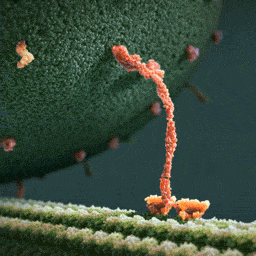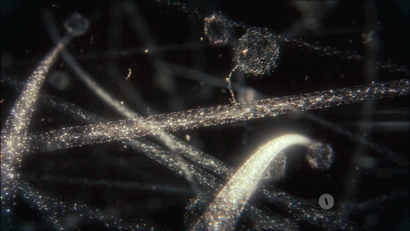Newest LIGO Signal Raises A Huge Question: Do Merging Black Holes Emit Light?










Newest LIGO Signal Raises A Huge Question: Do Merging Black Holes Emit Light?
“The second merger held no such hints of electromagnetic signals, but that was less surprising: the black holes were of significantly lower mass, so any signal arising from them would be expected to be correspondingly lower in magnitude. But the third merger was large in mass again, more comparable to the first than the second. While Fermi has made no announcement, and Integral again reports a non-detection, there are two pieces of evidence that suggest there may have been an electromagnetic counterpart after all. The AGILE satellite from the Italian Space Agency detected a weak, short-lived event that occurred just half a second before the LIGO merger, while X-ray, radio and optical observations combined to identify a strange afterglow less than 24 hours after the merger.”
Whenever there’s a catastrophic, cataclysmic event in space, there’s almost always a tremendous release of energy that accompanies it. A supernova emits light; a neutron star merger emits gamma rays; a quasar emits radio waves; merging black holes emit gravitational waves. But if there’s any sort of matter present outside the event horizons of these black holes, they have the potential to emit electromagnetic radiation, or light signals, too. Our best models and simulations don’t predict much, but sometimes the Universe surprises us! With the third LIGO merger, there were two independent teams that claimed an electromagnetic counterpart within 24 hours of the gravitational wave signal. One was an afterglow in gamma rays and the optical, occurring about 19 hours after-the-fact, while the other was an X-ray burst occurring just half a second before the merger.
Could either of these be connected to these merging black holes? Or are we just grasping at straws here? We need more, better data to know for sure, but here’s what we’ve got so far!
More Posts from Saients and Others
![😈 [http://bit.ly/2jn9ubb]](https://64.media.tumblr.com/ebde61c0c9935f4410f79478088a407f/tumblr_oklt3fWSa31s04h2ho1_500.jpg)
😈 [http://bit.ly/2jn9ubb]

The world’s smallest snowman is only 2.7 microns tall (for comparison, a human hair is 75 microns thick). To create it, scientists stacked 3 tiny silica spheres, added a nose and arms made of platinum, and cut the eyes and mouth with a focused ion beam. Source

Do you know what missiles at night look like? They look like this:

and this:

and these:

But do you know what they do not fucking loOK LIKE?? THIS:

OR THIS:

And they don’t fucking sound like this (listen with earbuds/headphones): https://twitter.com/angelsuxx/status/663202170502680577
This has been disproving the government’s bullshit with Lily




New comic! (link)
I’m going to be honest, this it the most I have ever used the science courses I took in undergrad. Glad all those thousands of dollars finally paid off.
Planets i learned about via youtube while procrastinating my english essay
Planet 55 Cancri e is basically a giant diamond. like the planet is a diamond. and it would be worth $26.9 nonillion
Planet Gliese 436 b is an ice planet that is constantly on fire do to its close proximity to its parent star. the ice doesn’t melt bc the planet’s gravity is so strong it physically prevents the ice from melting
Planet HD 189733b rains sideways glass…. constantly
Planet J1407-B has planetary rings that are 200x the size of saturn. if saturn’s ring were as big as J1407-B’s we’d be able to see them with our naked eye from earth AND they would dominate our sky and look larger than a full moon
Planet Wasp-12b rotates so close to its parent star that its slowly being consumed by the it
Planet Gliese 581c is one of the candidates for a planet that can support life however it orbits a tiny dwarf star and is tidally locked so one side is constantly subject to immense sunlight while the other is constantly in darkness. there’s a small area of the planet however, that is just the right temp to support life. u just can’t step out of said area. the skies are red and the plants would have be a black color instead of a green bc they would use infrared light for photosynthesis. (a message was actually sent to the planet in 2008 in hopes that there’s life on the planet but the message wont reach the planet until 2029).
Planet GJ 1214b is a water planet nicknamed “water world” is has no land at all and the water is so deep it goes down miles all the way to the planet’s core.
Planet Wasp-17b is the largest planet discovered thus far. its so large its existence contradicts our understanding of how planets are formed. and it has a retrograde orbit, so it orbits in the opposite direction of its parent star.
Planet HD 188753 has 3 suns you should have triple shadows and there would be almost daily eclipses. and no matter which direction u face on the planet u would always see a sunset
Planet HD106906b is the loneliest planet discovered thus far. its known as “super jupiter” bc its 11x bigger than jupiter. it orbits its parent star at a distance of 60 billion miles (which is v strange) hence why its the loneliest planet.
Planet Tres 2b is the darkest planet known. it reflects less than 1% of light (it reflects less light than coal and black acrylic paint). the tiny part of the planet that does reflect light is red making the planet glow a dim red.
Photographer Endangers His Life To Capture Lava, Meteor, Milky Way And Moon In One Shot
culturenlifestyle:

American adventure photographer Mike Mezeul II has captured what is arguably one of the most stunning images of Mother Nature at work.
Keep reading


Your body is an incredibly bizarre machine.
“What you see is a myosin protein dragging an endorphin along a filament to the inner part of the brain’s parietal cortex which creates happiness. Happiness. You’re looking at happiness.”
Two New Missions to Explore the Early Solar System
We’ve got big science news…!

We’ve just added two more science missions to our lineup! The two selected missions have the potential to open new windows on one of the earliest eras in the history of our solar system – a time less than 10 millions years after the birth of our sun.

The missions, known as Lucy and Psyche, were chosen from five finalists and will proceed to mission formulation.
Let’s take a dive into each mission…
Lucy
Lucy, a robotic spacecraft, will visit a target-rich environment of Jupiter’s mysterious Trojan asteroids. Scheduled to launch in October 2021, the spacecraft is slated to arrive at its first destination, a main asteroid belt, in 2025.

Then, from 2027 to 2033, Lucy will explore six Jupiter Trojan asteroids. These asteroids are trapped by Jupiter’s gravity in two swarms that share the planet’s orbit, one leading and one trailing Jupiter in its 12-year circuit around the sun. The Trojans are thought to be relics of a much earlier era in the history of the solar system, and may have formed far beyond Jupiter’s current orbit.
Studying these Trojan asteroids will give us valuable clues to deciphering the history of the early solar system.
Psyche
The Psyche mission will explore one of the most intriguing targets in the main asteroid belt – a giant metal asteroid, known as 16 Psyche, about three times farther away from the sun than is the Earth. The asteroid measures about 130 miles in diameter and, unlike most other asteroids that are rocky or icy bodies, it is thought to be comprised of mostly metallic iron and nickel, similar to Earth’s core.

Scientists wonder whether psyche could be an exposed core of an early planet that could have been as large as Mars, but which lost its rocky outer layers due to a number of violent collisions billions of years ago.

The mission will help scientists understand how planets and other bodies separated into their layers early in their histories. The Psyche robotic mission is targeted to launch in October of 2023, arriving at the asteroid in 2030, following an Earth gravity assist spacecraft maneuver in 2024 and a Mars flyby in 2025.
Get even more information about these two new science missions HERE.
Make sure to follow us on Tumblr for your regular dose of space: http://nasa.tumblr.com

The tail of a 99-million-year-old dinosaur, including bones, soft tissue, and even feathers, has been found preserved in amber, according to a report published today in the journal Current Biology.

A micro-CT scan of the delicate feathers that cover the dinosaur tail. Image: Lida Xing.
While individual dinosaur-era feathers have been found in amber, and evidence for feathered dinosaurs is captured in fossil impressions, this is the first time that scientists are able to clearly associate well-preserved feathers with a dinosaur, and in turn gain a better understanding of the evolution and structure of dinosaur feathers.
We clearly need a new Jurassic Park movie featuring cute feathery dinosaurs.

A reconstruction of a small coelurosaur Credit: Chung-tat Cheung





Vera Rubin, the woman who discovered the first evidence of dark matter, has died at 88
Vera Rubin, the astrophysicist responsible for confirming the first existence of dark matter, died on Sunday night at the age of 88.
Carnegie Institution president Matthew Scott called Rubin “a national treasure as an accomplished astronomer and a wonderful role model for young scientist.”
Rubin and her colleagues observed galaxies in the 1970s, they learned the motion of stars is a result of a “material that does not emit light and extends beyond the optical galaxy” — also known as dark matter.
Swiss astrophysicist Fritz Zwicky proposed the idea of dark matter in 1933, but Rubin’s groundbreaking work subsequently led to the confirmation of the material.
This finding is what led to the discovery that 90% of the universe is made up of dark matter, a finding some colleagues felt was overlooked and deserving of a Nobel Prize. Read more
follow @the-future-now
-
 bigtimesadness reblogged this · 4 years ago
bigtimesadness reblogged this · 4 years ago
Stardate: 2258.42...or, uh, 4... Whatever. Life is weird, at least we've got science.
75 posts